-
About
- About Listly
- Community & Support
- Howto
- Chrome Extension
- Bookmarklet
- WordPress Plugin
- Listly Premium
- Privacy
- Terms
- DMCA Copyright
- © 2010-2025 Boomy Labs


 Stan Phelps
Stan Phelps
Listly by Stan Phelps
A yellow goldfish is anytime a business does a little extra to contribute to the happiness of its customers, employees or society. These examples are part of a crowd sourcing project powering the book, Yellow Goldfish by Stan Phelps and Rosaria Cirillo (published 09/18/18). Get your copy on Amazon: https://www.amazon.com/Yellow-Goldfish-Happiness-Productivity-Prosperity/dp/1732665206
Source: https://www.amazon.com/Yellow-Goldfish-Happiness-Productivity-Prosperity/dp/1732665206
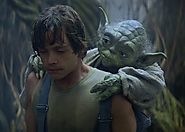
“It’s your job to be inspired.”
That simple phrase rang in my ears. Paul Bennett, a passionate creative and colleague, noticed that I had fallen into a slump, and asked me to join him for breakfast. What he offered wasn’t fortune cookie advice. It was an imperative, a mandate, a Jedi moment.
When designing something new is your job, you can’t just wait for inspiration to strike, he said. You have to go after it.
At IDEO, projects span from 3 weeks to several months—short and intense sprints that range across a variety of industries. Somehow between two of my projects, I had stepped into the mire of creative despondency. I wasn’t feeling generative or inspired. Worse, I had become distracted by those haunting voices of self-doubt—“Are you good enough,” and “Are you really doing enough”—the grime of the dark side.
To get unstuck, I turned to my Jedi Master guides—three innovative leaders who I greatly admire: Paul Bennett (Curiosity Chronicles), Diego Rodriguez (Metacool), and Tim Brown (Design Thinking).
I was driven by a single question: What inspires those who inspired me?
They seemed inexhaustible in their ability to get others excited about new ideas—never disengaged or tired of whatever they were working on. I emerged with three guiding principles for how to stay inspired.
#1: BE CURIOUS
“You must unlearn what you have learned.” — Yoda
Remember your childhood wonders—half material, half magical? Your creativity wasn’t pretentious. It wasn’t contrived. It was driven by pure curiosity. Somewhere along the way, as you got older, you lost that force, or buried it. But cultivating curiosity sets us back on a path of discovery. It pushes us out of the realm of complacency, and opens us again to the (im)possible. There lots of ways to stoke it. One way I recommend is taking a human centered design approach to problem solving (download the Human Centered Design Toolkit as a start).
#2: DO
“In my experience, there’s no such thing as luck.” — Obi Wan Kenobi
I got my next bit of Jedi wisdom on a walk with Diego Rodriguez, an insightful design leader here at IDEO. As we talked about doing great work, he said, “The truth is, I’m most inspired when I’m producing, not consuming.” Instead of just putting down work that is uninspiring and waiting for some answer, he said, I’d be more likely to alight upon solutions by picking up something entirely different—something creative, generative, or simply active. It’s important to unfocus sometimes, and allow space for other ideas, outside the specific challenge, to help your work along. In other words, don’t just wait around for inspiration, mine for it.
#3: REFLECT
“You will find only what you bring in.” — Yoda
There is something to be said for connecting the dots. I was chatting with Tim Brown, the third of my Jedi Masters, and asked him, “How do you stay inspired when you’ve seen it all?”
He seemed genuinely surprised. “Me? No way! I’m always trying to find ways to connect interesting things that initially seem unrelated.” Figuring out how disparate things relate to one another often uncovers something entirely new, he said.
Not long after these talks, I got out of my rut. Not by identifying what inspires, but by figuring out how to stay engaged. I now follow the gerunds: searching, doing, and reflecting, to find inspiration and bring it in.
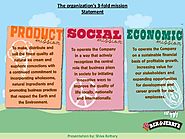
To operate the company in a way that actively recognizes the central role that business plays in society by initiating innovative ways to improve the quality of life locally, nationally and internationally
It’s Not Climate Change… It’s Everything Change
Backstory: In 1978, good friends Ben Cohen and Jerry Greenfield decided to start a business together. The duo briefly considered bagels, but found the equipment was too expensive. Instead they opted for opening a shop featuring homemade ice cream in Burlington, Vermont. Armed with a five dollar correspondence course in ice cream-making from Penn State, they renovated an old gas station into a store. On their first anniversary, the pair gave away free cones to thank customers of their new business, a practice that continues today at Ben & Jerry’s Homemade Ice Cream stores. Ben and Jerry were pioneers in developing a socially conscious business. They were proponents of the idea that business needs to protect the environment. Ben & Jerry’s is an advocate for what they call Climate Justice. In their words,
We live in a world where the effects of climate change are increasingly real; from melting ice caps to rampant forest fires, it can no longer be denied that manmade carbon pollution is affecting our fragile planet. The scientific evidence is settled; global warming is real and already impacting people around the world. The question now is, “What are we doing about it?” Every passing year, we see changing patterns of precipitation, including more intense rainfall events around the world, dramatic changes in the arctic, changes in agricultural growing seasons and rising sea levels and ocean acidification. Some of these changes in our climate will have dramatic ecological and social consequences. The cruel irony of climate change is that people in the developing world, who can least afford to adapt to climate change, will pay the steepest price for the 200 years of industrialization and pollution from the developed world. It truly is an issue of climate justice. http://www.benjerry.com/values/issues-we-care-about/climate-justice
The company believes that we must take steps to dramatically reduce global greenhouse gas emissions – and to do it in a way that equitably shares the burdens and risks of climate change among the nations of the world. There is no quick fix to solve climate change, but the company advocates for:
Divesting from fossil fuels
Increasing renewable energy sources
Putting a price on carbon pollution
Working with developing countries to invest in renewable energy
Ben & Jerry’s Chunkinator
The company has calculated its carbon footprint, and is working to reduce it. They are working with suppliers to reduce methane emissions from farms. They are changing to a cleaner, greener freezer in the US and have built the Chunkinator at their Netherlands factory which helps power the factory from ice cream bi-products. It’s one step toward doing more. Ben & Jerry’s aims to get to 100% clean energy at all of their U.S. sites by 2020.
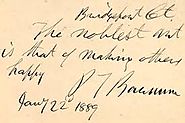
P. T. Barnum is famously quoted as saying, “The noblest art is that of making others happy.” With The Greatest Showman, the Australian duo of director Michael Gracey and star Hugh Jackman fully embrace this sentiment in retelling the birth of show business. From the sensational opening scene, watching the film is a joyful experience. An homage to big musicals of the past, it progresses from start to finish linked together by one grandiose song after another, full of over-the-top production and exciting choreography. The passion poured into the project oozes off the screen in every performance and its multiple positive messages about chasing your dreams, using your imagination, and accepting everyone as they are serve as inspirational lessons for child and adult alike. Also creating that emotional connectivity are the excellent songs, featuring lyrics from Benj Pasek and Justin Paul, the break-out songwriters of La La Land‘s award-winning “City of Stars.”
Source: http://feelinfilm.com/movie-review-greatest-showman/
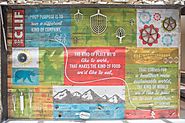
Employers are finding that supporting and providing incentives for their staff improves motivation and engagement, which in turn impacts productivity. (Source: ChicagoBusiness.com)
Let’s look at a handful of relevant examples from Clif Bar:
The Emeryville-based nutrition company offers employees a half-hour of paid time to work out. Additionally, employees get 2.5 hours of free personal training per year.
Environmental issues are very important to the company. Clif Bar gives their employees $6,500 toward the purchase of a fuel-efficient vehicle and $1,000 to do an energy upgrade on their home.
The company was born on a bike. Clif Bar gives employees $500 for the purchase of a commuter bike so long as they agree to commute by bike at least twice per month.
Employees receive a $350 stipend to help cover the entry costs for races, events and competitions.
Every week the company assembles for a company breakfast — bagels, fresh fruit, eggs, oatmeal, juice, bacon and sausage and more are served — and the team shares news, announcements and a consumer’s letter of the week.
TAKEAWAY STAT: Clif Bar enjoys a retention rate of 96 percent.
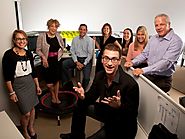
About a decade ago, Steve Cody, one of Peppercomm's founders and a managing partner, started taking stand-up comedy classes for fun. He worked with Clayton Fletcher, a touring stand-up comedian, to build his chops.
"As he started doing more and more stand-up, he started to recognize that, although he was very good at client meetings and presentations, he was getting a lot better" says Deborah Brown, Partner and Managing Director, Strategic Development. (Source: Matt Wilson, Ragan.com)
Brown credits the training with developing not only speaking skills, but listening as well. It wasn't long before the entire management committee at Peppercomm was taking comedy training. It was sprung onto the team at an offsite meeting. Soon after that, everyone in the company was involved. "For the past five years, it's become part of our DNA," Brown says. Clayton Fletcher is now the Chief Comedy Officer at Peppercomm.
In fact, comedy training is now mandatory at the agency and part of the onboarding process. The training consists of learning about the different types of comedy such as observational humor. It’s become a great way to meet the new hires with graduation consisting of a five minute set of stand-up. The agency has created fundraisers out of the performances as well as incorporating them into agency offsite meetings.
Funny Business
The training has become an integral part of Peppercomm. Deb Brown credits it with improving productivity, building teamwork and injecting fun into the agency. Humor is now part of the fabric of Peppercomm, whether it takes the form of spicing up an interoffice e-mail or creating a funny video for a client pitch. The agency has received a number of positive stories in the press and has recently started to extend the training to existing and prospective clients.
GETTING THE LAST LAUGH
The biggest benefactor has been the culture at Peppercomm. The agency was recognized by Crain’s as one to the Top 50 places to work in New York City. In case you are interested, here are the Top 5 in descending order:
5) Microsoft
4) Conductor
3) Allison + Partners
2) Squarespace
Drumroll please... 1) Peppercomm
This whole approach of taking the business seriously, but not yourself can be summed up in one quote from the agency:
“Comedy training does more than create a unique culture. It produces a better business executive, someone who is just a tad ahead of their peers when it comes to listening skills, building audience rapport, and thinking in a nanosecond. Happy, funny employees are also the reason why we maintain so many long-term client relationships, experience low turnover, and produce amazing creativity. And that’s no joke.”

The Google-O-Meter gives all employees a voice on employee suggestions and potential cultural changes. Google's Chief Culture Officer Stacy Sullivan implemented the company's charting tool, the Google-O-Meter, to gauge the popularity of employee suggestions, such as housing more doctors on site or bringing overseas employees to headquarters for a visit. "It wasn't something that we would just go and implement for them," she says. "Their suggestions had to be reflective of things about the culture that [many] people wanted to change." (Source: Entrepreneur)
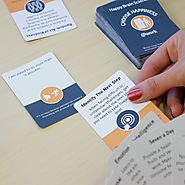
Do you ever wish your workplace was a little happier? Let’s face it most organizations could use a little more joy, connection, kindness, hope and authenticity when it comes to the ways people go about their jobs. But how can you introduce evidence-based positive psychology practices without making people groan in the process?
The Choose Happiness @ Work game by Happy Brain Science is an evidence-based tool to boost positivity, increase team morale, and enhance performance in workplaces that gives you a safe, enjoyable way to discuss issues and solve real workplace problems. You can use it as leadership tool, with teams, or in coaching to introduce positive psychology into the workplace.
The card game consists of 50 scenarios cards that identify common workplace situations and provides a 100 evidence-based solution cards under four categories: Practice Positivity, Subdue Stress, Flow to Goals, or Revitalize Relationships. The dealer takes a scenario card and each player then chooses a solution from the seven cards they’ve been dealt, and explains to others in the game why they feel this solution may best help resolve the scenario. Then the dealer chooses the most helpful and creative response and points are awarded and team actions agreed, before the rounds continue with the dealer rotated.
For example, if the scenario card drawn was: “The politics at work have been especially intense lately. It feels like I must walk on eggshells to avoid problems”. It explains that this is an issue because much of our stress – and happiness- comes from our relationships with each other. Politics can be demoralizing.
Then you could suggest a way forward from these possible solutions cards?
Specific Gratitude – Think of three big or little specific things at work you are grateful for and tell others about them in detail. Everybody try it now! (Practising Positivity).
Midday workout – Take an exercise break in the middle of your work day. This timing is helpful, giving you more energy for the remainder of your day. (Subdue Stress)
Positive Goals – Phrase goals in positive terms. Don’t include what you are trying to prevent or avoid, just describe the future you want. (Flow to Goals)
Take Responsibility – Take responsibility and do the right think, acting ethically and authentically. If you made a mistake, act to correct it for all involved. (Revitalize Your Relationships)
What Have Researchers Found?
Practice Positivity – research suggests you can train your brain to be more positive and resilient by adjusting how you interpret and respond to what’s happening around you. While you can’t always change the scenarios you face in the workplace, choosing to look and feel grateful for the good things around you can help you feel more engaged, motivated, happy and successful at work. And it appears that experiencing positive emotions at work – such as awe, gratitude, forgiveness, and hope – doesn’t just make you feel happier, but can leave you more likely to be open to new ideas, better at problem solving, and able to foster better relations with others.
Subdue Stress – looking after yourself by choosing healthy food, sleeping well, moving regularly and connecting with others can help you buffer stressful events and feel happier as a result. One way to improve your connections with others is to respond enthusiastically to their good news through practicing active constructive listening. Research has found that if you change your relationship with stress, so rather than regarding it as something to be avoided at all costs, you embrace it as an energizing force that can help you stand up for what matters most to you and reach out to others for support you are more likely to feel confident, connected and have higher levels of wellbeing.
Flow to Goals – when you are completely absorbed in an activity – in state of flow – you are more likely to feel engaged, energized and satisfied in your job. Flow involves finding the right balance between your skills and new challenges, so you can bring your best strengths and talents to your task at hand. And a growing body of evidence suggests finding new ways to develop your strengths – those things you are good at and enjoy doing -each day can help you feel more engaged, be more productive and find a greater sense of meaning in your work.
Revitalize Relationships – building and maintaining high quality connections – the small moments of genuine connection with others –have been found to be critical building blocks for bringing out the best in people and organizations. Focusing on these moments can help enhance your performance, engagement, creativity, commitment, and that of others around you. Studies suggest you can build high quality connections by giving others your undivided attention, encouragement, assistance, support and trust.
Source: https://www.michellemcquaid.com/choose-happiness-work/

His job is to design activities that keep employees smiling — and loyal to the company.
Tyler Williams, 33, is the head of experiential marketing for Zappos, an online retailer based in Las Vegas.
Q. In the language of Zappos, you’re called a fun-gineer. Why?
A. Our chief of staff dug up the title for me. My job is to bring joy and smiles to Zappos’s 1,500 employees. (Without the hyphen, by the way, I’d be a technician of fungi.) For example, I built an instant dance party in the company lobby. It works like this: When you push a button with a sign under it that says, “Don’t ever push this button,” lights go on and music blares. My position comes within our brand aura department, which is similar to other companies’ brand marketing departments.
Zappos sells shoes and clothing online. How did you get a job there?
In truth, I did not have work experience related to anything at Zappos. I’d been a professional drummer since high school, had built stages and knew audiovisual technology. I had heard it’s easier to get accepted to Harvard than to get a job at Zappos. I took the creative route and wrote, starred in and produced a video about the company’s 10 core values. Once hired, my first job was at the customer call center.
That doesn’t sound like a good fit for a creative type like you. Was it?
Not exactly. But the job I applied for was filled internally. That made me admire the company for its integrity to promote from within. Everyone — even our C.E.O., Tony Hsieh — has worked the customer services lines. After six months, I became a new-employee trainer.
How did that eventually evolve into your current position?
Because I was handy with constructing things, I became known for developing and executing fun ideas. The turning point was when Tony was preparing to give a speech for Amazon in his apartment. He needed to show the video in three rooms simultaneously. I knew how to do that. That’s when a light went on in Jamie Naughton’s head. She’s our chief of staff, and suggested I write my own job description. Jamie started calling me a fun-gineer, and it stuck.
Do you miss playing drums?
I managed to create a musical opportunity for myself and the many other musicians working at Zappos. We set up a music stage in the trailer park where a lot of employees, including Tony, live. Once a month, musicians show up to jam. We call it Open Air. I don’t miss the life of a musician on the road at all, so this is a wonderful compromise.

What is the formula for high employee retention? Read this personal account of one employee's journey to discovering professional and personal fulfillment.
I love my job.
Sure, 15Five pays me to write blog posts that positively show our company culture and product. But I mean it, I genuinely love working here:
– My colleagues are brilliant and inspiring.
– I am treated with respect, and am fully supported by management in my personal and professional goals.
– I am celebrating my one year work-a-versary and have evolved from who I was when I joined the company.
You may be saying to yourself, “Employee retention is a challenge, and recruiting and hiring is expensive and time-consuming. How can I create an environment where my employees love the company and their work?”
The answer is simple: week after week, company leaders provide me the space to do my best work and to evolve into the best version of myself.1
They do that by regularly asking a handful of questions about my goals and my ideas. They check-in with how I am feeling. They gather information and respond with supportive feedback instead of just making assumptions and perpetuating disconnection.
Replicating that environment in your workplace is easier than you think.
…And Justice For No One
I wasn’t always this excited about the company I worked for. Like you, I have had my share of lousy jobs.
While I am currently a content manager, I am also technically a lawyer. I am not licensed to practice law but if I wanted to feed my ego, I could put the illustrious “J.D.” after my name on my business card.
Ladies and Gentlemen of the JuryAt one time grand visions of a legal career floated in my head. I saw myself in a three piece pin-stripe suit pacing before the jury. In my reverie, I pause to check my pocketwatch and hurl question after question at a witness in my southern accent (I do not have a southern accent, but in this dream I am channeling Atticus Finsch – so sue me).
I make the witness quiver with fear, exposing their lies with my rock-solid cross examination. A hushed awe fills the courtroom as I proclaim, “no further questions, your honor.”
In reality I would wake up every morning before heading to the law office, dry heaving as I brushed my teeth. The lawyer I worked for was impatient, rude and downright mean. The thought of going to work made me sick to my stomach.
Dream Job Turned Nightmare
I arrived at work (not in a 3-piece suit, but a cheap button-down and a hand-me-down tie). I would creep quietly towards my office, praying that my boss was on a call or in court so that I wouldn’t have to talk to him.
I was working as a contractor, a legal assistant being groomed to one day take over his firm. I was a hard-worker: offering litigation support for two different law firms and moonlighting as a waiter. All while finishing my law degree.
I could tell in our meetings that my boss was holding back rage for even the smallest flaw in performance, perhaps waiting to unleash once I agreed to come on full time. I was almost never recognized, only chastised.
Have you heard the saying, “people don’t quit their jobs, they quit their bosses”? Well, eventually the stress got to me and I quit.
During my exit interview, I was finally asked about my experience. I said that family law was too adversarial and intense for me. My boss didn’t believe me and he kept prodding me for more information. I imagined that countless others had similarly left his employ, too afraid or embarrassed to confront him about how he treated people.
The experience soured my desire to be a famous litigator from the south. I grabbed my briefcase and my six-figure education debt and walked on.
Communication Breakdown
The meandering river of fate, landed me on the shores of the online dating industry. I was trained in direct-response marketing, and felt more supported in my work. But I wasn’t being encouraged to become my best self or align with my zone of genius as a writer.
I wrote email copy that waxed romantic about first kisses, long walks on the beach, and couples rolling around on a blanket in the throes of passion. I wanted our would-be customers to feel hopeful about making connections. I proudly forwarded my work to my marketing director.
“No”, she responded.
“No, what? It’s too long? Not romantic enough?”
“David, you have to make people feel lonely, sad, bad about themselves. From a place of desperation they will sign up for our product.”
That type of communication was such a departure from who I am as a person. I didn’t want to manipulate people so I shifted into a new role – project manager.
What could possibly go wrong there?
Ooooh Ooooh Ooooh Love Hurts
I was so excited for my new role! Wow, I thought, I can make our product better so that people will find each other and fall in love. I can heal the world by connecting people, I can make a difference!
Love Ain't Free“David, that’s not exactly what we need to do. We need you to gate certain features of the product so that people are prompted to pay.”
“Hmmm…well that sounds alright. I want the company to succeed financially. What features?”
“Text, chat, messaging, and winks.”
“So every feature that allows people to actually communicate with another human being using our ‘free’ service?”
“Exactly!”
…
So long dating site, hello freelance copywriting!
Employee Support = Employee Retention
I was scared to leave my secure job to go out on my own as a contractor. I also knew that I was a skilled writer, and I trusted that clients would emerge from within my network. Pretty soon I had more work than I could handle.
My biggest client, was a company that developed team communication and employee feedback software. I had experienced work environments where communication breakdowns caused employee attrition, poor morale, and lack of engagement and productivity. Now I was part of a movement to end all that through an agile software application. I believe in the product but that’s not what got me to seek full-time employment at 15Five.
After working as a contractor for only two months, I went on a week-long work retreat in Sedona to meet the rest of our globally distributed team. We all shared vulnerable information about ourselves including our personal goals. I said how grateful I was to be honing my skills as a writer at 15Five, skills that were feeding into my personal goal of publishing a novel.
Three weeks later, out of the blue, I received this email from our CEO:
David Hassell 15Five Email Support Employees
That was it for me. I knew that my search for a fulfilling job had ended. A month later I was a full-time employee.
I continue to be supported as I write my novel. The company has paid for creative writing classes, and they check-in on my progress often. I have a strong desire to continue working here for as long as I can give my greatest gifts and contribute to the realization of our mission.
And all it took was one little question.
-David Mizne

Designing Happiness
How to achieve happiness in your career and create experiences that inspire happiness in others.
A few weeks ago, I had the pleasure of being invited to give a guest lecture at a California College of the Arts design class. The week’s topic was happiness.
Happiness in design comes from contributing to a greater good — getting rid of your ego and aligning yourself with a goal that’s bigger than you.
Form
From left to right: Shalin Amin, Daniel Burka, Soleio Cuervo, Mia Blume, & Brynn Evans
Earlier this year, Google hosted a design conference called Form. There was a panel about Talent & Hiring — a topic that I am particularly excited about since I’ve been very involved in it at Facebook. In the panel, Daniel Burka mentioned something that was particularly insightful, so I tweeted what he said and added the conference’s hashtag:
Thanks to Burka’s unapologetic poignance, the tweet got a bunch of attention from other conference attendees, so a lot of people saw it… among them was Benny, who replied with a slightly more aggressive tweet:
I don’t follow Benny and he doesn’t follow me. In fact, we have never interacted on Twitter. Yet he felt the need to attack me personally.
But it didn’t stop there. Benny kept going, digging through old dribbble shots and mocking them. This went on all night, without any response from me.
Maybe Benny was jealous that he didn’t get invited to the conference. Maybe he saw my work and was enraged that it wasn’t to the standard he thought Facebook deserved. Maybe he was just drunk for attention.
It really doesn’t matter why this happened. The point is:
Adversity doesn’t always come from a place of reason, or a place you can control.
Gaining validation and respect from your peers is important, but it shouldn’t be your primary motivation. Too many people are distracted by follower counts, likes, and comments.
If you put all your self-value in your personal image, you’re bound to find disappointment. In order to achieve happiness, you must pursue ideas bigger than you, bigger than any single one of us.
True happiness is not attained through self-gratification,
but through fidelity to a worthy purpose. — Helen Keller
I believe you should always be vulnerable as a designer. You should assume your work is not perfect, expect that you have not yet found the best solution and welcome criticism along the way. However, this can prove to be very taxing, especially if you see your design as the end goal of your contribution to a project. Visuals will quickly become out of date and interaction patterns will change and fade away (remember those sexy carpet textures?). What should remain constant is your commitment to a worthy cause. Happiness is almost always linked to purpose — the reason why you do something, not necessarily the praise you’ll get (or not) for the way in which you go about doing it.
Purposeful Design
At Facebook, that purpose is to make the world more open and connected. This is a map of all the connections made through Facebook as of 2010:
It’s amazing! You can almost see the whole world drawn through these connections. However, there are parts of the world that are still missing; China is almost completely absent and there are large portions of Africa that need to be filled in, too.
Here’s a video that better illustrates what I mean:
That was internet.org, a project led by Facebook to bring the internet to everyone in the world and give them access to the knowledge economy.
These and many other ideas alike are what drives us at Facebook. This is important because we constantly sacrifice our ego in service of these aspirations. You could put a ton of time into something and it could suddenly get killed, goals might change, or team members might leave or lose interest. This is obviously frustrating because you immediately question the time you’ve spent on that project: I now have nothing to show for the work I’ve done. Did I just waste X months of my life?
But the bigger goal is more important than your individual output or whether or not your name gets attached to it. Unveiling a new product is sexy, but the true learnings lie in the things we choose not to ship.
Every individual step you take informs the company’s path towards achieving its mission.
This is why choosing a mission that closely aligns with a future in which you’d like to live in is paramount to achieving self-realization in your career.
How to inspire happiness in others
So, once you’ve defined your goal and are ready to go, how do you create experiences that inspire happiness in others? The answer lies in this book:
Designing forEmotion, by Aarron Walter.
This is one of the best design books I’ve read. It’s part of the A Book Apart series — a must read for any designer out there.
In his book, Aarron Walter tweaks Maslow’s Hierarchy of Needs and adapts it for product design:
At the lowest level, a product has to be functional. If a product doesn’t work at all, users wont use it. Once a product is functional, it has to be reliable. If your product is only available intermittently, users won’t trust it. They’ll leave for other sites that can do the same thing more reliably.
UX deals with making products usable and pushing them beyond that to pleasurable. Without the underlying layer of reliability to build upon, a site won’t ever get to the stage of being usable. You can’t use a site that you can’t access, and you certainly can’t enjoy it!
Ok, that’s great but… how can I create experiences that inspire happiness in others?
Cue in Ira Glass, an American public radio personality and the host and producer of the radio and television show, This American Life.
He talks about the gap between your work and your taste and how the only way we can get through it is by continuously doing a lot of work.
Let’s take a look:
I swear I think about this every day. I’m not yet the designer I aim to be, but I have been lucky to work on projects that have touched a few lives in a modest way. I’m happy to continue the pursuit of a mission I feel passionate about and motivates me to get up and go to work every day.

friend from a Fortune 500 company called me recently. “Our CEO wants us to be more innovative,” she said. “He asked me to call you because Google is known for having an innovative culture. One of his ideas is to set up a ‘creativity room’ where we have a foosball table, beanbags, lava lamps, and lots of snacks so people can come up with crazy ideas. What do you think? How does Google do it?”
My friend and her CEO were clearly familiar with the Google perks that get all the press: The free cafes, the funky offices, and the games. What they weren’t familiar with are the three components of our culture that really make our company different. Moreover, my personal belief is that these three components are relevant and applicable to almost any organization, because they describe the conditions necessary (although not sufficient) to foster creative, committed, and innovative teams.
Mission
We spend more time working than we do on almost any other activity in our lives. People want all that time to mean something. Other companies make similar products, and yet our employees tell us that they are drawn to Google because being here means something more than ‘just’ searching the internet or linking friends.
Mission statements are easy to write, but difficult to realize. Google’s mission is to organize the world’s information and make it universally accessible and useful. That’s nice rhetoric, but how do you make it mean something? Because our mission is a bottom-up encapsulation of what excites Googlers, it creates an arena where data and people can be brought together in surprising ways, ranging from Speak2Tweet (the voicemail-to-Twitter application launched during the Egyptian revolution) to a father sending his daughter a twenty-first-century message in a bottle (as seen in our ‘Dear Sophie’ campaign for Chrome – check it out on YouTube).
The translation of our mission into something real and tangible has a huge effect on who decides to join Google, how much engagement and creativity they bring to this place, and even on how they feel and behave after leaving.
Transparency
‘Default to open’ is a phrase sometimes heard in the open-source community. Chris Grams from Red Hat defined defaulting to open as “…rather than starting from a point where you choose what to share, start[ing] from a point where you choose what not to share.” Google didn’t create this concept, but it’s safe to say we ran with it.
We share everything we can. We have a weekly all-hands meeting called TGIF, hosted by our founders, Larry and Sergey. In the first 30 minutes, we review news and product launches from the past week, demo upcoming products, and celebrate wins. But the second 30 minutes is the part that matters most: Q&A.
Everything is up for question and debate, from the trivial (“Larry, now that you’re CEO will you start wearing a suit?” The answer was a definite ‘no’), to the ethical (“Is Google going in the right direction?”). A few weeks into every quarter, our Executive Chairman, Eric Schmidt, presents to all Googlers virtually the exact materials that were presented to our Board of Directors at their last meeting. Our intranet includes product roadmaps, launch plans, and employee snippets (weekly status reports), alongside employee and team OKRs (quarterly goals) so that everyone can see what everyone else is working on. We share everything, and trust Googlers to keep the information confidential.
And if you think about it, if you’re an organization that says ‘our people are our greatest asset,’ you must default to open. It’s the only way to demonstrate to your employees that you believe they are trustworthy adults and have good judgment. And giving them more context about what is happening (and how, and why) will enable them to do their jobs more effectively and contribute in ways a top-down manager couldn’t anticipate.
Voice
Believing in a greater good and knowing what’s going on are important, but people then need to be able to translate their beliefs and knowledge into action. We try to have as many channels for expression as we can, recognizing that different people – and different ideas – will percolate up in different ways. The channels include direct emails to any of our leaders; TGIF; various sites and listservs; Google+ conversations (of course); the Google Universal Ticketing Systems (‘GUTS’ – which is a way to file issues about anything, and is then reviewed for patterns or problems, similar to New York City’s 311 line); ‘FixIts’ (24-hour sprints where we drop everything and focus 100 percent of our energy on solving a specific problem); and a wide range of surveys.
But just as important as generating input is doing something with it. We regularly survey employees about their managers, and then use that information to publicly recognize the best managers and enlist them as teachers and role models for the next year. The worst managers receive intense coaching and support, which helps 75 percent of them get better within a quarter.
We spend more time working than we do on almost any other activity in our lives. People want all that time to mean something.
Our largest survey, ‘Googlegeist,’ solicits feedback on hundreds of issues and then enlists volunteer employee teams across the entire company to solve the biggest problems. A new engineering-to-product management rotation program, and the across-the-board salary increases we provided at the beginning of the year, are just two recent examples of programs that have come out of Googlegeist.
Some people will argue that giving employees so much information and such a loud voice leads to anarchy, or to a situation where, since everyone’s opinion is valued, unanimity is impossible, as anyone can object and derail an effort; an environment where 10,000 people can say ‘no’ but no one can say ‘yes.’ The reality is that every issue needs a decision maker. Managed properly, the result of these approaches is not some transcendent moment of unanimity. Rather, it is a robust, data-driven discussion that brings the best ideas to light, so that when a decision is made it leaves the dissenters with enough context to understand and respect the rationale for the decision, even if they disagree with the outcome.
I was at a dinner of Chief HR Officers once and one told me, “Well of course Google can do this. You guys have great margins. I’m in a business with low single-digit margins. I can’t afford cafes or TGIFs or any of the things you do.” He was right that he couldn’t afford the cafes, but the cafes don’t actually have anything to do with it. Before I could reply, another person jumped in and said, “What are you talking about? Most of what makes Google’s culture work is free.” She was right. The bulk of what we do to cultivate this creative, passionate workforce costs nothing. Making our mission tangible is a natural outcome of who we are. Defaulting to open and giving Googlers a voice is a natural consequence of acting in accordance with what we believe about people.
And personally, I believe this is an insight about the human condition. People look for meaning in their work. People want to know what’s happening in their environment. People want to have some ability to shape that environment. Mission. Transparency. Voice. These three components of our culture create a virtuous cycle of attraction, community, engagement, and innovation.
With all this in mind, I turned back to my friend on the phone. I told her a bit about how Google thinks about these issues, and suggested that perhaps their CEO could try videotaping his staff meetings and sharing the recordings with people so they can see what’s going on in the company and what’s important to their leaders. “No,” she replied, “we’d never do that.”
How about having junior people attend leadership team meetings as note-takers, and they could then be vectors for that knowledge across the company? “No, we couldn’t share that information with junior people.”
Hmm… Okay. What about when the CEO does employee meetings, seeding the audience with the tough, provocative questions that people are afraid to ask. No? A different angle is to have a suggestion box – which she thought might work – and then each quarter let a self-nominated group of employees decide what suggestions to implement. And maybe even giving them a budget to do so? “Oh no, that won’t work. Who knows what they might do?” At which point I wished her luck with the beanbags and lava lamps.
-Lazlo Bock

Our wall is starting to come together! Happy International Day of Happiness! #GratitudeWR #IDOH pic.twitter.com/89nR7uCzZO
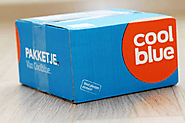
Introductie de Likeable doos
Gisteren (lees 15 november) ontving ik mijn nieuwe telefoon die ik had besteld via de website van Coolblue. Als er één bedrijf is dat de klant voorop stelt, dan is het wel Coolblue. Dit jaar wonnen ze nog de award voor beste Facebook pagina van Nederland via Sprout.nl. Dat ze op het gebied van online marketing sterk zijn, dat is een feit! Maar heb je die geweldige doos van Coolblue gezien? De doos heeft ongeveer zo’n 5 likeable gedeeltes. Hieronder ga ik ze één voor één behandelen.
Pakketje van Coolblue
Likeable gedeelte 1: Humor op de bovenkant van de doos
De meeste pakketjes die je ontvangt zijn saai en scheur je gelijk open. De bovenkant van Coolblue zorgt al meteen voor entertainment. Op de bovenkant vertellen ze je duidelijk hoe je de doos moet openen. Gasbrander, zaag, hakbijl, betonboor en verfroller zijn geen opties. Gewoon openen met een mes of schaar.
Likeable gedeelte 2: Tips voor extra uitpakpret
Likeable gedeelte 2: Tips voor extra uitpakpret
Een pakketje openen is altijd fijn, vooral als je weet dat er iets leuks in zit. Coolblue doet hier nog een extra schepje bovenop. Ze geven je vijf tips om de pret van het openen van het pakketje te vergroten. +2 voor entertainment
Likeable gedeelte 2: Tips voor extra uitpakpret
Likeable gedeelte 3: Als je het hebt over mond-tot-mond reclame
Je kent het wel, je pakketje wordt geleverd maar je bent niet thuis. Gelukkig wordt het pakketje afgeleverd bij je buurman waar je het met een opgelucht hart kunt ophalen. Coolblue geeft je hierbij de “stille hint” om je buurman nog even te bedanken. Als we het hebben over mond-tot-mond reclame! Jij en je buurman hebben een goed gevoel door het bedankje en Coolblue krijgt er misschien wel een nieuwe klant bij door. In ieder geval is hun naamsbekendheid vergroot.
Likeable gedeelte 3: Als je het hebt over mond-tot-mond reclame
Likeable gedeelte 4: Fotochallenge
Dacht je dat een doos een doos was? Coolblue daagt je uit om een creatieve foto van de doos te maken waarmee je kans maakt op die magnifieke maandprijs. Wie wil er nou niet kans maken op een prijs door iets leuks met een doos te doen? Foto schieten, versturen en ja hoor…Alweer een persoon die op een leuke manier praat over Coolblue.
Likeable gedeelte 4: Fotochallenge
Likeable gedeelte 5: Bodem
Is de onderkant van de doos saai? Nee hoor…. Hier maken ze nog even duidelijk waar je terecht kunt met eventuele vragen met daarbij de verwijzingen naar hun social media kanalen.
Likeable gedeelte 5: Bodem
Marketing? Heb ik het gemist?
Gedeelte 1: Door het gebruiken van humor op de bovenkant, krijg je gelijk al een enthousiast gevoel over jouw pakketje maar daarnaast ook over Coolblue. = Likeable
Gedeelte 2: Coolblue gebruikt hierbij een stukje entertainment. Je enthousiaste gevoel over je pakketje maar ook over Coolblue neemt toe. = Likeable
Gedeelte 3: Overduidelijk….Door het bedanken van je buurman vergroot je de naamsbekendheid van Coolblue. = naamsbekendheid / beïnvloeden
Gedeelte 4: Mensen activeren om de naam van Coolblue naar buiten te verspreiden. Oftewel: naamsbekendheid vergroten door een leuke actie. = naamsbekendheid / activeren klant
Gedeelte 5: Mensen in verbinding stellen met de social media kanalen van Coolblue en laten weten dat je klaar staat bij vragen = klantenbinding / naamsbekendheid social media kanalen / aftersales / klantenservice
Waarom vind ik het doosje zo geweldig?
Zelf ben ik een groot fan van Coolblue gezien hun totale marketing activiteiten. Klantenbinding, klantenservice, klantentevredenheid, belevenis en ervaring met Coolblue … Naar mijn gevoel zijn ze op alle vlakken erg sterk. En dan heb ik het nog helemaal niet over hun social media inzet gehad 😉 Juist door het ontwerpen van zo’n geweldig doosje, zorgen ze ervoor dat mensen een positieve belevenis hebben bij Coolblue.
En zo hebben ze ervoor gezorgd, dat ik zo enthousiast over Coolblue ben, dat ik dit artikel over ze schrijf 😉
Key take-aways:
Gebruik humor om mensen te binden aan je bedrijf;
Zoek naar manieren om op alle vlakken meerwaarde te bieden aan je klanten;
Promoot je online marketing kanalen door te kijken waarop de blik van mensen is gericht;
Verzin een manier die ervoor zorgt dat mensen over jou gaan praten;
Klant is koning! Wat je ook doet…..stel de klant altijd voorop! Gelukkige klant = nieuwe ambassadeur = iemand die graag met zijn vrienden over je bedrijf praat.

A "recent" heartwarming viral story offered as a counterpoint to prominent news reports about some high-profile negative airline incidents is actually two years old.
United Airlines has probably made you sick of reading about airlines by now, but we promise this story is a good one. Recently, Peggy Uhle was boarding a flight from Chicago to Columbus, Ohio. She decided to turn off her cell phone as the plane rolled away from the gate (talk about a good passenger). The plane went through its safety protocol and was ready for take off, but it wasn’t long until the plane decided to turn back around on the tarmac at Midway Airport and taxi back toward the gate. Peggy and other passengers were very confused as to what was going on.
Once the plane was anchored at the gate again, a flight attendant approached Peggy and asked her to get off. Peggy was confused and thought maybe she had boarded the wrong plane, but she agreed and got off the plane. When she got back inside the terminal, a gate agent told her to call her husband. He had been forced to contact Southwest Airlines because Peggy’s phone was turned off. But luckily, with the urgency of the airline the two spouses were able to get in contact with each other at the last moment.
It turned out that Peggy’s 24-year-old son had suffered a serious head injury and was in a coma in Denver, Colorado. But wait, there’s more. As Peggy was trying to take in the shocking news, a staffer explained that the airline had reticketed her on the next direct flight to Denver and arranged all of the other details for her. All for free.
In an interview with BoardingArea.com, Peggy explained more, “They offered a private waiting area, rerouted my luggage, allowed me to board first, and packed a lunch for when I got off the plane in Denver. My luggage was delivered to where I was staying, and I even received a call from Southwest asking how my son was doing.”
Luckily, her son has reportedly recovered from his injuries making for a happy ending to a story.
While we can’t prepare ourselves for the unexpected in life, it’s nice to know companies like Southwest Airlines can help make the situation less of a hassle when we need it the most. That’s taking care of your customer! United, take note!

Disney Goal: To create the happiest place on Earth
Backstory: Van Arsdale France, who in 1955 founded the “University of Disneyland,” and was tasked with creating a training program for those who would bring Walt’s dream of Disneyland to life. As he was preparing to pitch what would become the purpose of Disneyland to Walt and Roy Disney, Van Arsdale France once said, “My goal, as I saw it, was to get everyone we hired to share in an intangible dream, and not just working for a paycheck.” Van recounted the experience…“And here were top executives, all of them right there, and I had to get up and say ‘And now our theme: the purpose of Disneyland is to create happiness for others.’ And you see, the beautiful thing about saying, ‘We’re going to create happiness’ was then I could say, ‘Look, you may park cars, clean up the place, sweep the place, work graveyard and everything else, but whatever you do is contributing to creating happiness for others.’” For me, that has been the key learning: the “host of labels out there that describe organizational direction” can seem overwhelming, or confusing, and, in too many organizations, very few people can recite, or even recall them without referring to their notes. Van’s particular genius was to create a single unifying principle that connects every Cast Member with the emotional aspirations of our Guests. He explained this common purpose using the French phrase, “raison d’etre” (reason for being), and it’s what drives the extra effort, the creativity, the teamwork, and the extraordinary Guest focus that Disney is known for.
3 O’Clock Parade
Disney historian Les Perkins shared a story about Walt Disney at Disneyland during the early years of the park. In 1957, Walt decided to hold a Christmas parade at the new park at a cost of $350,000. Walt’s accountants approached him and besieged him to not spend money on an extravagant Christmas parade because the people would already be there. Nobody would complain, they reasoned, if they dispensed with the parade because nobody would be expecting it. Walt’s reply to his accountants is classic: “That’s just the point,” he said. “We should do the parade precisely because no one’s expecting it. Our goal at Disneyland is to always give the people more than they expect. As long as we keep surprising them, they’ll keep coming back. But if they ever stop coming, it’ll cost us ten times that much to get them to come back.” They held that Christmas parade and soon it became a daily fixture at Disney parks. So much so that the #1 question asked at Disney…”What time is the 3 o’clock parade?”
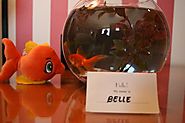
Introduced at the Hotel Monaco in 2001, the boutique hotel chain began to offer travelers the ability to adopt a temporary travel companion for their stay. Perhaps you were traveling on business and getting a little lonely. Or maybe you were with family and missing your family pet. Kimpton to the rescue, they’ll give you a goldfish for your stay. They call the program Guppy Love. The goldfish has become a signature element of the Kimpton experience. The program has gained national attention.
“The Guppy Love program is a fun extension of our pet-friendly nature as well as our emphasis on indulging the senses to heighten the travel experience,” says Steve Pinetti, Senior Vice President of Sales & Marketing for Kimpton Hotels and Restaurants, of which Hotel Monaco is a premier collection. “Everything about Hotel Monaco appeals directly to the senses, and ‘Guppy Love’ offers one more unique way to relax, indulge and promote health of mind, body and spirit in our home-away-from-home atmosphere.”

To do everything for the love of dogs
Backstory: In 1936, Clement L. Hirsch founded the Dog Town Packing Company in
Vernon, California. During World War II, the Company became Victory Packing Company, supplying food for U.S. war dogs. It’s introduction of a canned all-meat pet food in the 1940's helped to pioneer the high quality pet food business of today. In 1957, the Company changed its name to Kal Kan Foods, Inc. It continued to grow and prosper during the early sixties, introducing new products while increasing distribution on existing Kal Kan brands. In 1968, Mars, Incorporated acquired Kal Kan. In the early 2000’s, the brand managers at Mars’ Masterfoods decided they needed a new campaign. They turned to agency TBWA\Chiat\Day for ideas. Agency lead Lee Clow proposed a new redesign that challenged the entire way the company operated. Clow shared his thinking in an interview with one:design. Here is an excerpt from the article:
‘With Pedigree, we had to help them to discover their culture and behavior. Over the years, we’ve kind of formalized how we believe iconic brands are created—and the first piece involves understanding what a brand truly believes, as opposed to what it makes or sells. In the case of Pedigree, we felt the belief system should be, ‘Everything we do is for the love of dogs.” It was a credo that rang true in terms of the values and the history of the brand (Pedigree was among the first to offer packaged pet food as a healthier alternative to feeding dogs table scraps, and the brand was also known as a favorite among dog breeders). But it hadn’t been expressed in Pedigree’s external communications to the world. And even internally, Pedigree needed to do a better job of instilling the idea among its people that they worked for a company that was focused on the well being of dogs, as opposed to one that just made dog food. Clow knew that taking this strong emotional direction would be a challenge. “A large packaged-goods company has a tendency to be more left-brain and logical about these things; they’re more used to focusing on the 50-cents off coupon and how many units that will move off the shelf. When I sat down with top Mars folks to talk about this brand, I said, ‘I happen to believe—because I have a very personal relationship with dogs myself—that you guys are operating in a very emotional category here.” By moving to a much more emotional approach, Clow told the client, “it could provide a springboard into behavior and a way of acting as a brand that would set you apart—and would inform your product development, your packaging, and your actions beyond selling dog food.” Clow had advised Pedigree that if it intended to be a company for dog-lovers, it should “walk the walk” by implementing dog-friendly policies in its own workplace. The company began to encourage associates to bring their dogs to work—and as part of that effort, the agency helped redesign ID badges and business cards so that they featured images of employees’ dogs. Pedigree also began to extend healthcare benefits to associates’ dogs—opening the door for the company to become an advocate for other companies in other industries to consider doing likewise. Life at Pedigree changed overnight, as all the offices went to the dogs. Dogs were now part of the workday environment, and portraits of dogs adorned the walls. The company also stepped up its involvement in dog-related issues and causes, most notably its support of shelter dogs. Perhaps the biggest payoff is the one Clow observed in the people who work for the company. “They used to come to work every day thinking they worked for a dog food company,” he said, “and now they come in thinking they work for a company that loves dogs.”
Source: http://www.oneclub.org/oc/magazine/archive/?id=99
Pedigree Feeding Project
Pedigree believes their dog food can accomplish great things. That's why they created the Pedigree Feeding Project. The Project provides shelter dogs with a consistent, nutritious diet, helping them stay happy and healthy as they wait to find a forever home. Shelters who are part of the program receive the food at absolutely no cost, allowing them to use their limited resources on what really matters: finding loving homes for more of their dogs. The nutrition in the supplied Pedigree food supports the overall health of dogs with a focus in four key areas: skin & coat, oral care, digestion and immunity. This is especially important for shelter dogs, many of which have been deprived of a consistent diet and aren’t as healthy as they could be. http://www.pedigree.com/03Adoption/feeding-project/Default.aspx

To promote global well-being
Backstory: In 1886, Samuel Curtis Johnson, Sr. purchased the parquet flooring business of Racine Hardware Company. He renamed it Johnson's Prepared Paste Wax Company. Management of the private company has since passed down through five generations of the Johnson family. Today the company is known as SC Johnson & Son.
SC Johnson Greenlist
Following a decade of voluntarily removing chemicals from products, SC Johnson Greenlist™ process formally launched in 2001. The goal was to go beyond taking out “bad” ingredients and instead focus on choosing “better” options and continuously improving formulas based on information about ingredients’ impact on the environment and human health. The goal is to increase the percentage of our ingredients which have a lower impact on the environment and human health. Starting at 18% “Better”/“Best” ingredients in 2001; today in 2017 they are at 51%. Greenlist™ initiatives have eliminated over 460 million pounds of manufacturing waste and removed more than 13.7 million pounds of volatile organic compounds from SC Johnson products. Going forward, the company plans to continue to “promote global wellbeing” by supporting cultural, educational and public health projects that improve stakeholders’ quality of life and by removing all toxicity and non-biodegradability from its household cleaning products.
http://www.scjohnson.com/en/commitment/dialogue-on-sustainability/Business-with-a-Purpose.aspx

NUMI Organic creates a healthful product that nurtures people and honors the planet
Backstory: After spending many years apart traveling the world and pursuing interests in art, brother and sister Ahmed and Reem Rahim met up during a family vacation to the Grand Canyon and discussed starting a tea business. Ahmed had been living abroad and had owned and operated teahouses in Europe while Reem had been studying art in Northern California. They wanted to create an entity that would encompass both of their passions. In 1999, after observing competing brands in the U.S. tea market differed little from one another in quality, consistency, and selection, Numi was created in a tiny 750 square foot apartment in Oakland, CA. Inspired by art and exotic teas, Reem and Ahmed created a company whose hallmark is super-premium, organic and Fair Trade Certified teas and herbal teas made with 100% real ingredients.
http://greennaturemktg.com/product/numi-organic-tea/
Numi Curriculum
The NUMI Curriculum brings nature, artistic expression and social awareness to children in grades K-5. NUMI, in this context, stands for “Nature Underlies My Inspiration,” and brings original and imaginative art and nature-based curriculum to children in inner city schools. The Curriculum meets Social Sciences and Language Arts content standards for California Public Schools and was developed based on the following principles:
Children learn to respect, and have greater appreciation for their family, community, cultural heritage and environment when they participate in a wide range of creative, multi-cultural and educational experiences.
By nurturing creativity and imagination, children develop self-awareness, self-confidence, and the ability to visualize new possibilities.
When children are equipped with a bigger toolbox of creative skills combined with cultural and environmental understanding, they are more likely to grow into socially conscientious individuals who value and appreciate nature and their community.
A community that is served by socially conscious individuals will benefit and thrive in a globally healthy way.
http://numifoundation.org/programs/numi-curriculum/

To manifest our love and talent by crafting our customers' favorite brands and proving business can be a force for good
Backstory: Jeff Lebesch traveled to Europe in the summer of 1988. Lebesch toured Belgium on his mountain bike. He would return home to Colorado changed by the experience. Three years later in the basement of his house, the electrical engineer installed some brewing equipment. It was there that Jeff created his first two Belgian-style beers. The first was a brown dubbel named Abbey and an amber named in honor of his mountain bike. In Colorado, mountain bikes are called Fat Tires. Jeff’s wife Kim Jordan also got involved. She became New Belgium’s first bottler, sales rep, distributor, marketer, and financial planner. By the summer of 1991 they duo were selling Abbey and Fat Tire at festivals on the weekends. Less than one year later the pair quit their day jobs and moved production out of the basement. New Belgium Brewing Company was born. http://www.newbelgium.com/Brewery/company/history Before the first bottle of beer was ever sold, Jeff and Kim defined a clear purpose for New Belgium. The pair hiked into Rocky Mountain National Park with jug of home brew in one hand and pen/pad in the other. Here’s what they wrote:
COMPANY CORE VALUES AND BELIEFS
Remembering that we are incredibly lucky to create something fine that enhances people's lives while surpassing our consumers' expectations.
Producing world-class beers.
Promoting beer culture and the responsible enjoyment of beer.
Kindling social, environmental and cultural change as a business role model.
Environmental stewardship: Honoring nature at every turn of the business.
Cultivating potential through learning, high involvement culture, and the pursuit of opportunities.
Balancing the myriad needs of the company, our coworkers and their families.
Trusting each other and committing to authentic relationships and communications.
Continuous, innovative quality and efficiency improvements.
Having fun.
New Belgium Stewardship Grant Program and Beer Scouts
Through its Environmental Stewardship Grant program -- aka $1 per Barrel program --New Belgium donates $1 for every barrel of beer we sell to non-profits and causes. The causes that we focus upon fall into a few big categories, and one of those categories is bicycle advocacy and sensible transportation. In 2014, New Belgium gave $105,000 to support local organizations around the country who are working to make the bike a viable form of transportation in their communities. http://www.newbelgium.com/Sustainability/Stories/new-belgium-brewing/2014/11/10/A-Buck-a-Barrel-for-More-Bikes-Boom
The Beer Scouts are an interdepartmental group who sponsor volunteer events for coworkers and community members as a means to give back and inspire positive change. The group was formed with the goal of connecting busy people to projects they might be passionate about. The Scouts work to find great causes to support each year that are aligned with New Belgium’s values. They have helped log 12,500 volunteer hours of coworker time in the past five years.
The New Belgium Scouts encourage all co workers to find causes that they are passionate about to dedicate the precious gift of time to on our own. New Belgium rewards employees with paid time off for their efforts. Employees receive one hour of PTO for every two hours of volunteer work. In 2015, New Belgium coworkers volunteered over 2,773 hours.
Source: http://www.newbelgium.com/Sustainability/Community/BeerScouts

To inspire social and environmental change that results in the improvement of the human condition and the amelioration of poverty
Backstory: Wharton graduate Davis Smith created an outdoor gear company with a humanitarian mission. He named the company Cotopaxi after the volcano that looms over Quito, the capital of Ecuador. His original business model was similar to Toms Shoes and Warby Parker. A portion of the sales of each design was earmarked for a particular nonprofit. Five non-profits focused on either education, health, and livelihood receive a steady 2% of Cotopaxi’s sales.
Cotopaxi Questivals
Cotopaxi stages one-day adventure races it calls Questivals, in which teams of two to six people complete outdoor challenges for a chance to win gear and trips. At the company’s World Championship, participants will race across seven countries, from Belize to Panama. Along the way, they’ll have to squeeze in good works, such as volunteering in soup kitchens. Armchair adventurers can track the team's’ progress on a proprietary app. http://www.bloomberg.com/news/articles/2016-04-21/cotopaxi-stitches-social-goals-into-every-backpack

To help reimagine a sustainable world for those who come after us
Backstory: Yvon Chouinard got his start as a climber in 1953 as a 14-year-old member of the Southern California Falconry Club. After one of the adult leaders, Don Prentice, taught Yvon the kids how to rappel down the cliffs to the falcon aeries. Yvon and his friends became fond of the sport. The only pitons available at that time were made of soft iron, placed once, then left in the rock. After meeting John Salathé, a Swiss climber who had once made hard-iron pitons out of Model A axles, Chouinard decided to make his own reusable hardware. In 1957, he went to a junkyard and bought a used coal-fired forge, a 138-pound anvil, some tongs and hammers, and started teaching himself how to blacksmith. The word spread and soon friends were asking for Chouinard's chrome-molybdenum steel pitons. Before he knew it he was in business. He could forge two of his in an hour, and sold them for $1.50 each. By 1970, Chouinard Equipment had become the largest supplier of climbing hardware in the U.S. That year on a winter climbing trip to Scotland, Chouinard bought a regulation team rugby shirt to wear rock climbing. Overbuilt to withstand the rigors of rugby, it had a collar that would keep the hardware slings from cutting into the neck. It was blue, with two red and one yellow center stripe across the chest. Back in the States, Yvon wore it around his climbing friends, who asked where they could get one. Chouinard began to see clothing as a way to help support the marginally profitable hardware business. As they made more and more clothes, they needed to find a name for the clothing line. According to Yvon, “To most people, especially then, Patagonia was a name like Timbuktu or Shangri-La, far-off, interesting, not quite on the map. Patagonia brings to mind, as we once wrote in a catalog introduction, ‘romantic visions of glaciers tumbling into fjords, jagged windswept peaks, gauchos and condors.’ It's been a good name for us, and it can be pronounced in every language.”
http://www.bloomberg.com/news/articles/2006-08-20/a-passion-for-the-planet
Patagonia Green sabbaticals
One popular perk is a program that allows employees to take off up to two months at full pay and work for environmental groups. Lisa Myers, who works on the company's giving programs, tracked wolves in Yellowstone National Park during her sabbatical. The company also pays 50% of her college expenses as she pursues a wildlife biology degree. "It's easy to go to work when you get paid to do what you love to do," says Myers.

To connect people to what's important in their lives through friendly, reliable, and low-cost air travel
Backstory: More than 38 years ago, Rollin King and Herb Kelleher got together and decided to start a different kind of airline. They began with one simple notion: If you get your passengers to their destinations when they want to get there, on time, at the lowest possible fares, and make darn sure they have a good time doing it, people will fly your airline. On June 18, 1971, the love airline is born. Dallas, San Antonio, and Houston are the initial three cities. The airline offered $20 one-way fares and Captain Emilio Salazar piloted the inaugural flight. https://www.southwest.com/html/about-southwest/index.html?int=
Bags Fly Free
Southwest Airlines does not charge for your first or second checked bag. While bag fees have become the norm amongst their competitors, Southwest has stayed true to our reputation as the maverick of the airline industry by not charging for bags. Lagniappe: skis and golf bags fly free as well. Passengers save up to $120 roundtrip with Bags Fly Free.
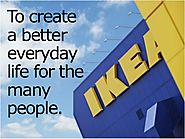
To create a better everyday life for the many people
Backstory: Ingvar Feodor Kamprad was born on 30 March 1926, on a small farm called Elmtaryd near the rural village of Agunnaryd, in the Swedish province of Småland. Kamprad began his career at the age of six, selling matches. When just ten, he crisscrossed the neighbourhood on his bicycle, selling Christmas decorations, fish and pencils. At 17, in 1943, Kamprad’s father rewarded him with a small sum of money for doing well in school, despite being dyslexic. With it, Ingvar founded a business named IKEA, an abbreviation for Ingvar Kamprad from Elmtaryd, Agunnaryd, his boyhood home.Two years after starting IKEA, Kamprad began using milk trucks to deliver his goods. In 1947, he started selling furniture made by local manufacturers. By 1955, manufacturers began boycotting IKEA, protesting against Kamprad’s low prices. This forced him to design items in-house.The basic IKEA concept – simple, affordable furniture, designed, distributed and sold in-house – was complete. IKEA believe that anyone should be able to afford stylish, modernist furniture. Kamprad felt he was not just cutting costs and making money, but serving the people as well. Today IKEA is on the path to becoming the world’s largest furniture retailer. The Ikea catalogue is twice as widely distributed as the Bible.
Flat Pack
In 1953, Gilles Lundgren joined Ikea as a catalog manager. Three years later, he was tasked with delivering a new, leaf-shaped table called the Lovet to a nearby photo studio so it could be shot for an upcoming catalog. But he got frustrated trying to fit the table into his small post-war car. "When I looked at how we might keep a large number of these tables at our low price," he once said. "I thought: ‘Why not take off the legs?’" The rest was history. Lundgren always admitted that he was not the inventor of flat-pack furniture. A fellow Swede, Fiolke Ohlsson, patented a ready-to-assemble chair in 1949. Lundgren's legacy was in popularizing flat-pack. He became such a tireless advocate for flat-pack furniture that he soon convinced Kamprad to make it the cornerstone of the fledgling furniture maker's business model. https://www.fastcodesign.com/3057837/the-man-behind-ikeas-world-conquering-flat-pack-design

To open up the world, a world where people belong, anywhere
Backstory: In October of 2007, Brian Chesky and Joe Gebbia were living in a San Francisco apartment. They couldn’t afford rent. That weekend, an international design conference was coming to town, and all of the hotels were sold out. The pair had an idea. In Chesky’s words, “Why not turn our place into a bed and breakfast for the conference?” They inflated airbeds and called it the AirBed & Breakfast. From that first airbed, Airbnb grew person to person, block by block, city by city. Today, our community is in 34,000 cities in 192 countries. This idea is about much more than just making ends meet. At Airbnb, we are creating a door to an open world—where everyone’s at home and can belong, anywhere.
airBNB Disaster Response
Airbnb's Disaster Response Program helps house disaster victims for free. The program connects those in need with Airbnb hosts who have opened their doors to evacuees, providing safe places to stay in affected areas. Airbnb’s Nick Shapiro, "We are hopeful that Airbnb can help play a small part in making the evacuation process easier for residents and their families." The program was launched in 2012 after Hurricane Sandy struck. It was inspired by the 1,400 Airbnb hosts who provided Sandy victims with meals and roofs over their heads in New York. Airbnb decided to create an official tool that enables Airbnb hosts around the world to help those in need during times of crisis.

Stan Phelps is a Forbes Contributor, IBM Futurist, and TEDx Speaker. His keynotes and workshops offered at PurpleGoldfish.com focus on how to create meaningful differentiation to win the hearts of both employees and customers. He’s the best-selling author of: Purple Goldfish -12 Ways to Win Customers and Influence Word of Mouth, Green Goldfish - Beyond Dollars: 15 Ways to Drive Employee Engagement, Golden Goldfish - The Vital Few, Blue Goldfish - Using Technology, Data, and Analytics to Drive Both Profits and Prophets, Purple Goldfish Service Edition - The 12 Ways Hotels, Restaurants and Airlines Win the Right Customers, and Red Goldfish - Motivating Sales & Loyalty With Shared Passion and Purpose. Connect with me at stan@purplegoldfish.com or +1.919.360.4702.